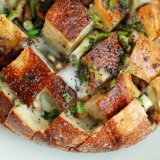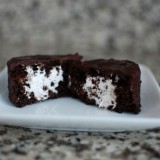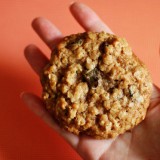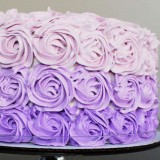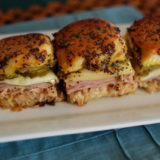Friday Faves – Drawings in Motion
This week’s featured Friday Favs blogger is a friend who I met in college. She is literally one of the sweetest and most creative people I have ever met. Amy’s blog, Drawings in Motion, features a lot of her graphic design work, some tidbits about photography, and the randomness that goes on in her life.
Hello to all of you! First, I’d like to give a big birthday shout out to Jen’s hubby! Its always great to have a birthday on a Friday. I’m sure they will be celebrating in style, as always, with amazing food and drink. It was so sweet of Jen to include me in her Friday Favs. It was tough to come up with a suitable post for such an esteemed food blog because I have somewhat limited skills in the kitchen. Don’t get me wrong, I do love to cook and I have a ton of fun with my little food escapades, but I don’t know that I have much valuable information to contribute in the realm of recipes. My husband and I are pretty adventurous eaters and we experiment with all sorts of cuisine. If it’s spicy or bold with lots of healthy whole foods we’re definitely interested. I think it’s the experimentation and the newness that I love the most. I also really love experimenting with photography and have taken my fair share of food photos. I thought that today I could share with you a few tips that I’ve picked up through my experimentation.
Here’s a slideshow of my family’s annual candy making tradition. It’s a long day’s work to make all this candy so I had plenty of time to just play around with my camera in between melting chocolate. After getting my camera back home and sifting through the photos I found certain shots way more interesting than others. Here are the top 10 things I learned from this shoot:
1. Lighting. Is. Everything. This is coming from a photoshop professional who loves the challenge of fixing images in post. I use photoshop every single day and can honestly make crap photos look pretty darn great if necessary. No matter how much magic you can work in photoshop, you will save yourself so much effort trying to fix bad photos if you just start with great lighting and end up with a better quality image overall. The best lighting is generally natural lighting. If you can get your food placed near a window with some beautiful light streaming in, you’re in great shape. In general the hours before 10 and after 5 are particularly lovely. Of course many food adventures take place after dark, especially in the winter when the sun sets so early, in which case you might consider bringing in reinforcements. Additional lighting of almost any kind that you can set near the food to illuminate it will almost always give you a sweeter image than your flash. (unless of course you have a nice super soft diffuser on your flash and decent ambient lighting to begin with) There is also the route of the light box which can work really well if set up right. There are a hundred different takes on the light box, one for every budget and space.
2. Take advantage of colors and patterns in your environment. Patterns and colors that compliment your food can go a long way to making your shot as a whole colorful and appealing. Pretty fabrics, scrapbook paper sheets, or wood grains are all great to experiment with.
3. Remember the rule of thirds. Play with positioning your subject in more than one composition that follows the rule of thirds. One of those compositions may surprise you.
4. Don’t forget about the blur. Depth of field will add dimension and help direct the eye of your viewer to what you find interesting about your subject. I shoot with my camera set to manual and where I understand that manual settings can be intimidating especially if you’re just getting started, there are really only two numbers that you need to remember at first. If you’re taking a portrait or a close-up of an object where you want the background blurry set your f-stop to 5.6 or 1.8. That’s it! It’s the key to getting that nice depth of field. Once you set your f-stop to one of those numbers, you will just need to adjust your camera’s light settings so that your image isn’t too dark or too bright. (Essentially when your light meter’s arrow is in the center of all of the notches your photo should be exposed correctly) 5.6 is the classic portrait f-stop and 1.8 will make your depth of field even shallower, for example, making it so only the subjects nose is in focus but the face is slightly blurred. Interesting angles with a nice depth of field will always help your food subject pop and be seen in a special way.
5. Circle your food like a hawk! But not just a hawk, you should also circle your food like an ant and a cat. Move along every axis shooting it from directly above to examine your food like flat graphic shapes, at a three quarters angle, from down below, or explore your food’s profile and silhouette.
6. Style your food. Use interesting plates, cups, bowls and spoons. Set up traditional place settings, or put the food on something unexpected. Thrift stores are great for finding unique dishware to play with.
7. Pick your food apart. Once your food is prepared cut parts open, slice it up, or crumble it. Alternatively, you could include raw ingredients that you used to prepare the food in the frame, for example an unpeeled onion, several mounds of spices, limes, or raw herbs.
8. Get in progress shots. So many parts of the food preparation process are so visually interesting. Creamy, dripping batters, freshly chopped or rinsed vegetables, un-frosted layer cakes. Process photos can be extremely interesting and beautiful.
9. Don’t forget the human element. Whether it’s an image of the cook chopping ingredients, the
child licking the batter, the hands’ of friends surrounding the meal at the table there’s always
some story involving a person connected to the food. That can be a fun thing to explore as well.
10. Punch it up in post. Call me a photoshop junkie but seriously, so often I find that an
uninteresting photo can become an image that pops with a quick little re-crop, saturation boost,
and/or curve adjustment. I try to delete as few photos as possible when they’re still on my camera because sometimes my seemingly unusable photos can become pretty little images with a little love.
Here are a few more shots of food that I’ve taken. As you can see, since I don’t blog my food adventures, I rarely create a set for my food and most of it is in a decently natural setting. If I were to create an entire blog where my main imagery was food though, I would definitely play with the idea of switching up color and pattern in the background of my shots to create variety and tone from recipe to recipe. I hope that these tips have been helpful to any of you beginner foodie photographers out there! I’m happy to share any additional bits of knowledge that I have. If there’s a particular area you’re interested in learning more about just ask! Happy Friday to you all!

Be sure to check out all of my favorite bloggers as they are featured on Friday Favs!







 I am Jen the Beantown Baker. Engineer by day and baking maven by night. Hubby serves as my #1 fan and official taste tester. We got hitched back in 2006. Barefoot. In the sand. With the waves crashing behind us. It was one of the best decisions we’ve ever made.
I am Jen the Beantown Baker. Engineer by day and baking maven by night. Hubby serves as my #1 fan and official taste tester. We got hitched back in 2006. Barefoot. In the sand. With the waves crashing behind us. It was one of the best decisions we’ve ever made. 